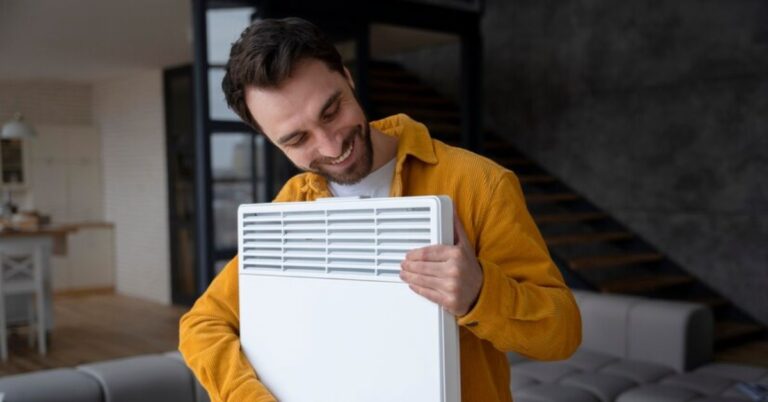Introduction
When summer temperatures soar, the importance of a reliable air conditioning system becomes undeniably clear. The decision to replace an air conditioner involves more than choosing a new model; it requires consideration of efficiency, size, budget, and environmental impact. While the upfront investment might seem daunting, the long-term benefits—enhanced comfort and energy savings—make it a worthy endeavor. Understanding available air conditioning replacement options is a critical part of this process. By aligning your current needs with new options, you ensure a decision that enhances your home’s comfort and efficiency.
Signs You Need a New AC
Recognizing when it’s time to upgrade your AC unit is key to avoiding unexpected breakdowns during critical cooling periods. Common indicators that a replacement is due include frequent repairs that are more than just a temporary fix, erratic cooling cycles that leave some rooms warmer than others, and significant spikes in energy bills that suggest diminished efficiency. According to the U.S. Department of Energy, air conditioners older than ten years can be less efficient, even when functioning correctly, often using up to 20-40% more energy compared to newer, eco-friendly models.
Different Types of AC Systems
Numerous air conditioning systems are available on the market, each tailored to a particular set of requirements and financial limitations. Every homeowner will be able to discover an appropriate cooling solution thanks to this range. Through the use of a network of ducts, central air conditioning systems consistently cool big homes while preserving air quality and delivering regular temperatures. In contrast, ductless mini-split systems provide the freedom of ductless cooling for separate rooms, which makes them perfect for homes with different occupancy levels or without ducting. Window units and portable air conditioners are budget-friendly options, perfect for cooling single rooms or small living spaces, providing supplemental relief when needed most.
Factors to Consider When Replacing an AC Unit
- Size:Choosing the right size AC is as crucial as selecting the model itself. Oversized units waste energy and raise utility bills by cycling on and off more frequently, while small units will have trouble maintaining the proper indoor temperatures and cause needless wear and tear.
- Budget:Establishing a clear budget is fundamental to the selection process. Consider not only the purchase price but also install costs, future maintenance, and the potential for reduced energy costs over time. Investing in a higher-seer, more efficient model often pays off in the long run due to lower electricity bills.
- Efficiency Ratings:When assessing possible units, the Seasonal Energy Efficiency Ratio, or SEER rating, is crucial. Higher SEER ratings indicate a system’s ability to efficiently convert electricity into cooling power, ultimately impacting household energy consumption and costs.
Energy Efficiency and Environmental Impact
Advancements in air conditioning technology have made significant strides toward greater energy efficiency and reduced environmental impact. Opting for a high-efficiency model reduces your carbon footprint, aligns with sustainability goals, and minimizes monthly utility expenses. Agencies like the Environmental Protection Agency recommend choosing units with advanced energy management features to mitigate greenhouse gas emissions effectively. Energy-efficient systems, often bearing the ENERGY STAR label, are designed to meet rigorous performance standards while offering superior comfort and savings.
Cost Analysis
Understanding the financial implications of replacing an air conditioner involves more than just considering the upfront expenditure. While the purchase price is a critical aspect, it’s essential to account for ongoing maintenance, potential repair savings, and the reduced energy costs associated with an efficient system. In many cases, investing in a high-quality, energy-efficient air conditioner leads to substantial savings by lowering monthly energy bills over the unit’s lifespan, making it a cost-effective decision in the long run.
Choosing the Right Contractor
A trained contractor’s competence is necessary for the specific process of installing a new air conditioning system. To ensure efficient and reliable service, it’s critical to engage professionals who possess industry certifications and a track record of successful installations. Verifying customer reviews and seeking personal referrals can provide insight into a contractor’s expertise and reliability. Proper installation is vital to guarantee that the new system operates at peak efficiency, maximizing the benefits of your investment.
Making the Right Choice
The process of replacing an air conditioner, while significant, is an opportunity to enhance the comfort and efficiency of your living space. You may make an investment in the total worth of your house by being aware of your possibilities and matching your decisions with your long-term objectives as well as your current demands. With the help of this advice, you can choose with assurance and make a decision that will satisfy your family’s needs for many years to come without worrying about unforeseen interruptions during periods of high usage.
When choosing a new air conditioner, evaluate factors such as energy efficiency, size, and compatibility with your home’s layout to optimize both performance and cost savings. Go for models with the latest features, like smart thermostats and variable-speed motors, to provide long-term flexibility and convenience. By focusing on these key elements, you’ll ensure your new system delivers reliable, energy-efficient comfort for years while also reducing the need for frequent maintenance or costly repairs.

